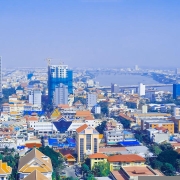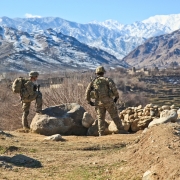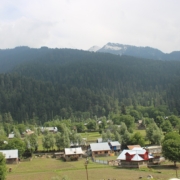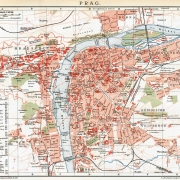What the Malaysian Railway Land dispute is about
Topic of Study [For H2 History Students]:
Paper 2: Regional Conflicts and Co-operation
Source Based Case Study
Theme III Chapter 1: Inter-state tensions and co-operation: Causes of inter-state tensions: historical animosities & political differences
Historical Context: The Malayan Railway
Under the Railway Act of 1918, the British acquired 217 hectares of Singapore territory to develop the Malayan Railway for a period of 999 years. It was initially known as the Federated Malay States Railways (FSMR), which later became Keretapi Tanah Melayu (KTM). The acquired land was to be used to establish the railway stations situated in Tanjong Pagar, Bukit Timah and Woodlands.
Points of Agreement
On 27 November 1990, a bilateral arrangement was made between Singapore and Malaysia to shift away from the Railway Act of 1918 and repeal the KTM Act of 1984. The Points of Agreement (POA) was signed by then Prime Minister of Singapore Lee Kuan Yew and then Finance Minister of Malaysia Tun Daim Zainuddin. The POA was made to undergo a joint development of the Tanjong Pagar Railway Station as well as the lands adjacent to the KTM-owned railway track.
Additionally, the Tanjong Pagar railway station would be relocated either to Bukit Timah or directly to Kranji. The plan was to allow Singapore to reclaim Tanjong Pagar for future development. In exchange, Singapore offered a plot of land of equivalent value in the Marina South to the Malaysian company.
Origins of the Dispute: A deadlock
However, in 1993, disagreements emerged as Malaysia was unwilling to relinquish ownership of the Tanjong Pagar land. Instead, proposals were made to re-develop the existing KTM railway into a “Trans-Asian electric railway” that extended from Singapore to Kunming, China. Also, reluctance was expressed due to fears over the perceived loss of KTM’s land in Singapore.
In September 1993, both countries agreed to relocate their Customs, Immigration and Quarantine (CIQ) facilities from Tanjong Pagar to the Woodlands Train Checkpoint (WTCP) in Singapore by 1 August 1998. Yet, in June 1997, the Malaysian authorities “changed its mind” and chose to keep its CIQ at the Tanjong Pagar railway station. As such, both parties sent officials to discuss new arrangements in two occasions in July 1998 for the arrangements pertaining to the Malaysian CIQ.
The Woodlands Train Checkpoint
As a result of the meetings, both sides agreed to re-locate the CIQ to Woodlands Train Checkpoint on 1 August 1998. The Ministry of Home Affairs (Singapore) published a press release on 24 July 1998 to announce the changes.
Singapore will allow Malaysian customs officials to operate at Tanjong Pagar railway station. Singapore officials will be present at Tanjong Pagar railway station to lend their authority to Malaysian customs officials during the interim period.
Singapore has agreed to Malaysia’s request to allow Malaysian Immigration to put some desks for its immigration officers on the passenger platform at WTCP to clear passengers after Singapore has cleared them for exit from Singapore.
Press Release by Ministry of Home Affairs (Singapore), 24 July 1998.
Improvement of Bilateral Relations: The 2001 meeting
In September 2001, leaders of both Malaysia and Singapore held a closed-door meeting to resolve the railway land dispute. Prime Minister Lee reiterated to his Malaysian counterpart, Dr Mahathir, that the POA was a “legally binding agreement” and stated that Singapore offered a plot of land at Shenton Way in exchange for joint development. In this letter, the water dispute was also being mentioned.
3. On the POA, I would like to confirm that what I said was that “the POA is being varied to give the extra 12 plots of land at Bukit Timah and the CIQ, too”…The 1990 POA is a legally binding agreement…
4. According to Clause 7 of the POA, the MRA land at Keppel where the rail station is currently sited will be exchanged for a plot in Marina South of equivalent value for joint development by M-S Pte Ltd. It is in accordance with an option given in Plan 2 of the POA, as stated in my letter of 24 August 2000 to Tun Daim, that I had offered a plot at Shenton Way for this exchange, for joint development.
Letter by Prime Minister of Singapore Lee Kuan Yew to Prime Minister of Malaysia, Dr Mahathir, 10 December 2001.
Recent developments: 2010 arrangements
Although there was an impasse of nearly 2 decades, a landmark land swap deal was finally made between the two countries in 2010. Three plots of former railway land – Keppel, Kranji and Woodlands – as well as three plots in Bukit Timah would be exchanged for four parcels of land in Marina South and two parcels of land in Ophir-Rochor.
A new company, known as M+S, was set up for the joint development of Marina South and Ophir-Rochor parcels. However, there were disputes over the Bukit Timah plots as they were not stated in the POA. Both parties referred to the Permanent Court of Arbitration at The Hague.
The Singapore Government shall vest four land parcels in Marina South and two land parcels in Ophir-Rochor in M-S Pte Ltd, in lieu of the three parcels of POA land in Tanjong Pagar, Kranji and Woodlands and three pieces of land in Bukit Timah.
The Marina South and Ophir-Rochor land parcels shall be vested in M-S Pte Ltd for joint development when Keretapi Tanah Melayu Berhad (KTMB) vacates the Tanjong Pagar Railway Station (TPRS). The KTMB station will be relocated from Tanjong Pagar to the Woodlands Train Checkpoint (“WTCP”) by 1 July 2011 whereby Malaysia would co-locate its railway Custom, Immigration and Quarantine (“CIQ”) facilities at WTCP.
Joint statement for meeting between PM Lee and PM Najib, implementations on the POA, 20 September 2010.
What can we learn from this article?
Consider the following question:
– How far do you agree that historical animosities were the main reason for the changing Singapore-Malaysia relations after independence [to be discussed in class]?
Other useful references:
– Why Singapore rejected a common currency with Malaysia?
Join our JC History Tuition and learn to organise your study for this topic on Regional Conflicts and Co-operation.
The H2 and H1 History Tuition feature online discussion and writing practices to enhance your knowledge application skills. Get useful study notes and clarify your doubts on the subject with the tutor. You can also follow our Telegram Channel to get useful updates.
We have other JC tuition classes, such as JC Math Tuition and JC Chemistry Tuition. For Secondary Tuition, we provide Secondary English Tuition, Secondary Math tuition, Secondary Chemistry Tuition, Social Studies Tuition, Geography, History Tuition and Secondary Economics Tuition. For Primary Tuition, we have Primary English, Math and Science Tuition. Call 9658 5789 to find out more.











